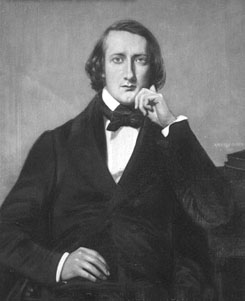And he was found synthetic nylon fiber, which was very strong and also very flexible. The first application was for bristles toothbrushes. However, Du Pont's real target was silk, particularly silk stockings. It took DuPont twelve years and US$27 million to refine nylon, to synthesize and develop the industrial processes for bulk manufacture. With a major investment, it wasn't surprise that Du Pont spared little expense to promote nylon after its introduction, creating a public sensation, or "nylon mania".
Nylon was stop at the end 1941 because of America had World War II. After 1946 DuPont Corporation was promote Nylon again to public .Nylons still important plastics, and not just for use in fabrics. In its bulk form it is very wear resistant, particularly if oil-impregnated, and it used to build gears, plain bearings, valve seats, seals and because of good heat-resistance, increasingly for under-the-hood applications in cars, and other mechanical parts.
Picture of Wallace Carothers


